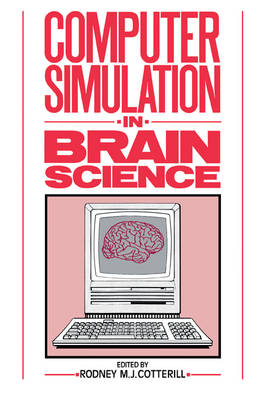
Computer Simulation in Brain Science
Cambridge University Press (Verlag)
978-0-521-06118-6 (ISBN)
Preface; Part I. Neurons and Neural Networks: General Principles: 1. Some recent developments in the theory of neural networks; 2. Representation of sensory information in self-organizating feature maps, and the relation of these maps to distributed memory networks; 3. Excitable dendritic spine clusters: nonlinear synaptic processing; 4. Vistas from tensor network theory: a horizon from reductionalistic neurophilosophy to the geometry of multi-unit recordings; Part II. Synaptic Plasticity, Topological and Temporal Features, and Higher Cortical Processing: 5. Neurons with hysteresis?; 6. On models of short- and long-term memories; 7. Topology, structure, and distance in quasirandom neural networks; 8. A layered metwork model of sensory cortex; 9. Computer simulation of networks of electronic neurons; 10. A possible role for coherence in neural networks; 11. Simulations of the trion model and the search for the code of higher cortical processing; 12. AND-OR logic analogue of neuron networks; Part III. Spin Glass Models and Cellular Automata: 13. Neural networks: learning and forgetting; 14. Learning by error corrections in spin glass models of neural networks; 15. Random complex automata: analogy with spin glasses; 16. The evolution of data processing abilities in competing automata; 17. The inverse problem for neural nets and cellular automata; Part IV. Cyclic Phenomena and Chaos in Neural Networks: 18. A new synaptic modification algorithm and rhythmic oscillation; 19. 'Normal' and 'abnormal' dynamic behaviour during synaptic transmission; 20. Computer simulation studies to deduce the structure and function of the human brain; 21. Access stability of cyclic modes in quasirandom networks of threshold neurons obeying a deterministic synchronous dynamics; 22. Transition to cycling in neural networks; 23. Exemplification of chaotic activity in non-linear neural networks obeying a deterministic dynamics in continuous time; Part V. The Cerebellum and the Hippocampus: 24. Computer simulation of the cerebellar cortex compartment with a special reference to the Purkinje cell dendrite structure; 25. Modeling the electrical behaviour of cortical neurons - simulation of hippocampal pyramidal cells; Part VI. Olfaction, Vision and Cognition: 26. Neural computations and neural systems; 27. development of feature-analyzing cells and their columnar organisation in a layered self-adaptive network; 28. Reafferent stimulation: a mechanism for late vision and cognitive processes; 29. Mathematical model and computer simulation of visual recognition in retina and tectum opticum of amphibians; 30. Pattern recognition with modifiable neuronal interactions; 31. Texture description in the time domain; Part VII. Applications to Experiment, Communication and Control: 32. Computer-aid design of neurobiological experiments; 33. Simulation of the prolactin level fluctuations during pseudopregnancy in rats; 34. Applications of biological intelligence to command, control and communications; 35. Josin's computational system for use as a research tool; Author index; Subject index.
| Erscheint lt. Verlag | 24.4.2008 |
|---|---|
| Zusatzinfo | Worked examples or Exercises |
| Verlagsort | Cambridge |
| Sprache | englisch |
| Maße | 152 x 229 mm |
| Gewicht | 850 g |
| Themenwelt | Informatik ► Grafik / Design ► Digitale Bildverarbeitung |
| Mathematik / Informatik ► Informatik ► Theorie / Studium | |
| Medizin / Pharmazie ► Medizinische Fachgebiete ► Neurologie | |
| ISBN-10 | 0-521-06118-0 / 0521061180 |
| ISBN-13 | 978-0-521-06118-6 / 9780521061186 |
| Zustand | Neuware |
| Haben Sie eine Frage zum Produkt? |
aus dem Bereich


